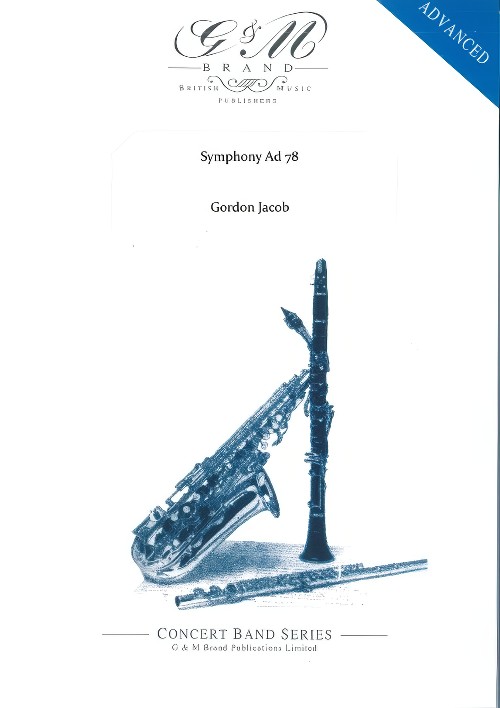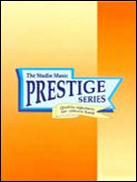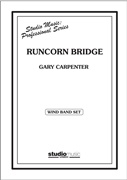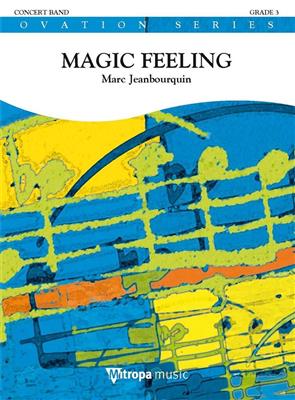Results
-
 £28.95
£28.95Symphony Ad 78 (Concert Band - Score Only) - Jacob, Gordon
A powerful work. An opening fanfare leads directly to an Allegro risoluto, which exudes determination and forthrightness. The second movement follows without a break and is a continuous plaint in which the melody seems forever seeking resolution like a troubled soul searching for respite. Only in the closing bars does peace seem to take over. The final movement, marked Allegro non troppo, starts with a cheering fanfare that leads to a bright and breezy romp, with a rustic feel about it. When the fanfare reappears we are suddenly immersed in exaltations of joy that really give a feeling of optimism as we proceed to the end of the piece via a short Coda.
Estimated dispatch 7-14 working days
-
 £124.95
£124.95NORFOLK RHAPSODY, A (Prestige Concert Band Set) - Ellerby, Martin
Score and Parts. Norfolk Rhapsody is a short tone poem based on an imaginary day 'somewhere in Norfolk'. Ellerby has scored the opening for recorders resulting in a mysteriously eerie atmosphere, before building into some wonderfully rhapsodic melodies showcasing all sections of the band. An unexpected use of vocals in the coda brings the piece to a poignant and blissful end. Recorded on Polyphonic QPRM157D Spirit of the Dance. Duration 10'00"
Estimated dispatch 7-14 working days
-
 £76.00
£76.00Octane
As you increase the octane in gasoline, you increase the horsepower in the engine. In this piece, David Shaffer has added all the octane necessary to create a powerful high intensity composition that is sure to be a hit with your students and your audiences! From the opening dialogue between the percussion section and individual wind choirs to the lush middle section, this piece is constant excitement from beginning to end. Pure energy and pure fun to play!
Estimated dispatch 7-14 working days
-
 £37.95
£37.95RUNCORN BRIDGE (Professional Concert Band - Score only) - Carpenter, Gary
The through-arch bridge that is visible for miles across the Cheshire Gap is one of two adjacent bridges that cross both the River Mersey and Manchester Ship Canal. Its formal name is the Silver Jubilee Bridge is more usually known as the Runcorn Bridge. Runcorn Bridge begins with a brief, quiet, introduction featuring an oboe solo. There follows a lively march at the end of which a reflective interlude (or bridge!) based upon the tune that occurs twice in the march leads to a lyrical, almost nocturnal section spotlighting the alto saxophone. A variant of the first interlude leads to a scherzo-like section kicked off by the euphonium with a 'trio' that contains a Latin-inflected version of the oboe melody first heard in the introduction. A third interlude variant heralds a return of the nocturnal melody firstly as a horn solo but subsequently returning to the alto saxophone. Previous melodic materials gradually combine as an extended crescendo leads to a majestic, but short, coda that in a gesture of symmetrical solidarity refers back to the march tune utilised in the earlier interludes. Duration: 10:30. Recorded on Polyphonic QPRM160D Bells Across the Atlantic.
Estimated dispatch 7-14 working days
-
 £54.99
£54.99Step Aside Wind Band Set (Score & Parts)
Excuse me, may I play along? Could you step aside, please? 'Step Aside' is a pleasant competition both between two tempi and among the different parts. After a short, slow introduction it is the drummer who, without asking the questions above, sets the high pace. As soon as this rapid movement has been established, 'part 1' takes the lead, but the other parts obviously don't want to miss a thing and follow in rapid succession. At the end of the composition the various parts 'compete' in order to be able to play solo for a while, but soon others join in again, asking 'Excuse me, may I play along?' 02:15
Estimated dispatch 7-14 working days
-
 £139.00
£139.00Kanskje kommer Kongen - Øystein Dolmen
"Kanskje kommer Kongen" ("Perhaps the King is Coming") is yet another example of Knutsen and Ludvigsen's creativity and imagination.The arrangement begins with a short fanfare in the introduction. From letter B, the melody is carried by horn and trombone with a majestic character.Ensure good precision in the accompaniment. From letter C, the style is Latin-inspired, resembling Samba. Alternative percussion solutions are possible here.From letter D, there is a pizzicato effect in 8th-notes, with sonorous melodic lines. The style becomes majestic and elevated again from letter E,then returns to the Latin style from letter F until the end.Reid Gilje
Estimated dispatch 7-14 working days
-
 £144.99
£144.99Serenata - Jan van der Roost
While composing Serenata, Jan Van der Roost didn't focus too much on virtuosity, acrobatics or spectacle. Instead, he wanted to let the solo instrument shine as a melodic and expressive voice. And indeed: the warm sound of the euphonium touches the heart of the audience straight away in the first section with a melodious theme. Then follows a rigaudon, a noble and elegant dance from the Renaissance era. Despite the fact that some of the variations on the main theme require some technique and agility, the overall character mostly remains songful. The composition as a whole builds further on these two musical ingredients, but thanks to a clever alternation of melodic and technical passages, it offers a nice stylistic diversity to the listeners. The band is definitely not 'just accompanying' but fully participates and begins a dialogue with the soloist: both musical partners have their say. The end is more spectacular and sonorous, giving an extra boost of energy to the soloist as well as the band in a grand finale!
Estimated dispatch 7-14 working days
-
 £84.99
£84.99Magic Feeling - Marc Jeanbourquin
To mark its centenary, the "Musikgesellschaft Hinterkappelen-Wohlen" decided to commission a light-hearted work comprising different styles brought together in one setting. With this in mind, Marc Jeanbourquin composed a piece with a theme based on a short 5-note ascending motif. He developed this theme in various styles - funk, ballad, Celtic and, finally, rock. Everything comes together at the end of the piece with this "magical" ascending motif. Will the musicians conjure and retain a magical spirit full of energy and vitality through playing Magic Feeling? - most certainly!
Estimated dispatch 7-14 working days
-
 £159.99
£159.99Traversada - Oliver Waespi
The crossing of a mountain pass is called traversada in Romansh. Such a crossing bears uncertainties and dangers, but also hope and new opportunities. Whoever sets out for a traversada is leaving behind what's familiar in the quest for new places and people. The piece Traversada, based on a Romansh song about farewell and uncertain reunion, musically depics such a journey. At the offset, off-stage soloists introduce fragments of the melody after which a dramatic narrative unfolds. An intense musical shift leads to a calm section, featuring the original melody in pulsating, muted sound colours. Towards the end, the whole structure is gradually rebuilt andleads to an exuberant ending, where the vibrant melodic motifs reemerge.
Estimated dispatch 7-14 working days
-
 £174.10
£174.10Do Dat Thing - Harry Connick Jr.
Harry Connick Jr. is an American pianist, singer, composer and actor from New Orleans. He has released many albums and perform frequently with his own big band. "Do Dat Thing" is a real "feel-good" song composed in New Orleans style. The tempo must not be too fast. A kind of rough, heavy groove is preferred. When staccato is notated, the 8th notes have to be straight. The notations in the Drums-part is optional. From 35, the rhythm in the bass-line is meant as information for the musician. Be aware of the dynamics from the beginning (not too loud) to give it a "lift" at the end of the piece.
Estimated dispatch 7-14 working days
